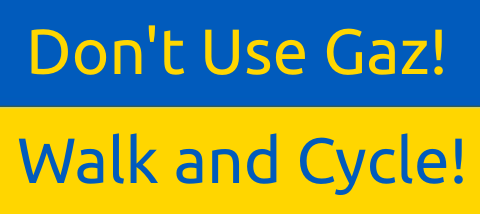
Birmingham City Council is consulting on plans for contraflow cycling in 3 locations in the city centre. These schemes are on roads with low levels of motor traffic, so there will be no physical segregation. The consultations close on 5th March 2024.
Here is the link for the consultation: Contraflow cycle lanes.
Push Bikes overall position:
We strongly support these proposals as a low cost way to deliver significant improvements for the cycling network. We believe that providing contraflow cycling should be the default for roads that are one-way for motor traffic, only to be avoided in specific circumstances with some major roads. We also believe that physical segregation from motor traffic is an unnecessary expense on the majority of one-way streets because the levels and speed of motor traffic is low enough.
Many people already cycle contraflow down many one-way streets, without causing traffic collisions or damaging anyone. Introducing contraflow cycling legitimises that existing practice, giving those people more legal standing for insurance claims if there is a collision, as well as addressing a common complaint in UK public discourse that “cyclists”, as a collective, always ignore the rules of the road when instead cycle users are encouraged by the way streets are laid out to behave in particular ways (we do not condone rule breaking, but note that behaviours such as ignoring red lights seem to be as common in Birmingham among people driving cars as riding bikes).
Detailed comments on the schemes:
Lionel Street & Fleet Street:
These two streets form a one-way loop for motor traffic from Newhall Street to Summer Row and back again. The closure of motor traffic access to the Queensway as part of the road works around the Paradise development greatly reduced motor traffic on these streets. University College Birmingham is located here, with a sizeable student population, so improving cycling conditions could encourage more of them to cycle. Fleet Street has a good access point on to the canal network, and providing the link from there back up to Summer Row makes that link more attractive to students at UCB, as well as commuters using Summer Row to access the city centre. Lionel Street provides a good parallel route to the Queensway, to connect to routes across to Newtown and the A34 cycle track. The contraflow cycling on that road will replace a much more convoluted wriggling route that has previously faced cycle users unwilling to break the law.
Steelhouse Lane:
The one-way loop past the law courts and children’s hospital has previously presented a barrier to people cycling from Colmore Row to the A34 cycle track, with the maze of one-way streets and pedestrianised areas blocking any direct route. When the tram was extended past Snow Hill Station, a short section of cycle track was put in to take cycle users off Colmore Circus Queensway, and this connects to a shared-use link between Colmore Row and Steelhouse Lane. But when a cycle user reaches Steelhouse Lane, they have to take a diversion down past Tony Hancock to get onto Corporation Street. Permitting contra-flow cycling down Steelhouse Lane will create a much more direct route for people to reach the A34 route from Colmore Row.
There is an issue with the design of this contra-flow, however, that will make it difficult for people who are already cycling on the short two-way section of Steelhouse Lane to access the contra-flow, because the contra-flow is designed to keep cycle users on a shared use pavement until after the junction with Printing House Lane. This is because there is a give-way sign and markings for traffic coming up Steelhouse Lane and turning into Printing House Lane, and this road layout makes it a little tricky to take the contra-flow into the one-way stretch of Steelhouse Lane. But we do need to make it possible for people who are already cycling on the carriageway to also access the contra-flow cycleway. We propose that the zebra crossings at the mouth of Steelhouse Lane and at the mouth of Printing House Lane should be made into tiger crossings with appropriate dropped kerbs, so that cycle users can use the tiger crossings to access the contra-flow more easily.
Church Street:
In the area around Colmore Row, extensive one-way streets have been used to manage the flow of motor traffic, including a large volume of buses and taxis. Cycling through this area can be frustrating with long queues of motor traffic slowing you down. Permitting contra-flow cycling up the length of Church Street will provide a different route for people to cycle through this area, missing out the streets full of motor traffic queuing up, and help cycle users to get to some destinations faster.
Unfortunately, however, there is still no contra-flow cycling solution on Colmore Row, so once someone reaches the top of Church Street, they will need to turn right towards Victoria Square. If they want to reach Snowhill Station or the new contraflow route down Steelhouse Lane, they will need to take the old route along Edmund Street to Livery Street and continue fighting all the queuing motor traffic. To achieve the full potential of this contra-flow on Church Street, there needs to also be a solution on Colmore Row for cycles to cycle contra-flow as well.


